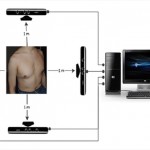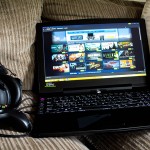
Introduction and design
The latest machine from Stoke, UK-based PC builders Overclockers UK is a monster, but it’s surprisingly small and affordable considering the other systems in the firm’s famous 8Pack range.
That’s because this is one of the best gaming desktops in the world – but it’s also a mini-ITX machine that’s designed for LAN events. It even arrives in a customised flight case.
The Asteroid is immediately stunning, and that’s no surprise – this machine has been designed, built and tweaked in Ian “8Pack” Parry. He’s a renowned overclocking expert who holds numerous world-records, and he works at Overclockers UK, developing the firm’s high-end machines. We interviewed 8Pack last year to find out more about his PC building methods.
He usually designs monster rigs that cost between $7,083 (about £5,000, AU$9,339) and $14,168 (about £10,000, AU$18,583). Starting at £3989.99 (around US$5,624 or AUS$7,509), the Asteroid is a departure – but Overclockers’ master builder has amply risen to the challenge.
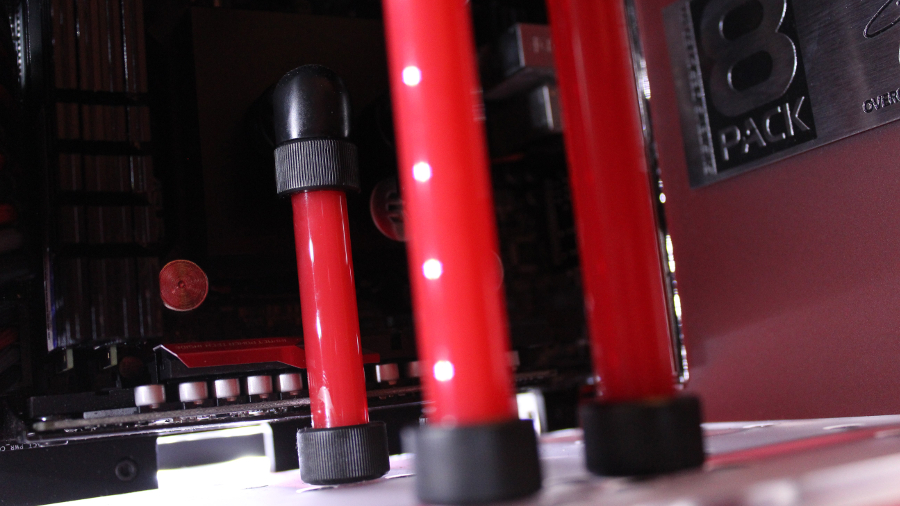
Water-cooling and a custom case
It all starts with a customised Parvum Veer chassis. It’s a mini-ITX case made entirely from acrylic, with layers of plastic in white, black and red deployed to match the Asteroid’s colour scheme. The top of the machine serves up a window and an opaque view into the reservoir, which bubbles and swirls with red coolant when the Asteroid is activated.
The front of the machine has angled inlays that show off the acrylic, and a slatted section shows the 8Pack-branded fans that function as an all-important air intake.

It’s a stunning start – and the Asteroid only gets better once its windowed side panel is removed. Four pipes filled with red coolant sit vertically, with a pair of pipes at the front and two shorter units at the back.
The former pipes head upwards to the graphics card, which has been modified with a clear EK waterblock that’s made from acrylic and nickel, while the latter tubes delve towards the processor and its solid black EK Supremacy EVO block. They’re fed by a thick sheet of custom-made acrylic that functions as a second reservoir: coolant flows through its plastic recesses and around an 8Pack logo before heading upwards to the components.
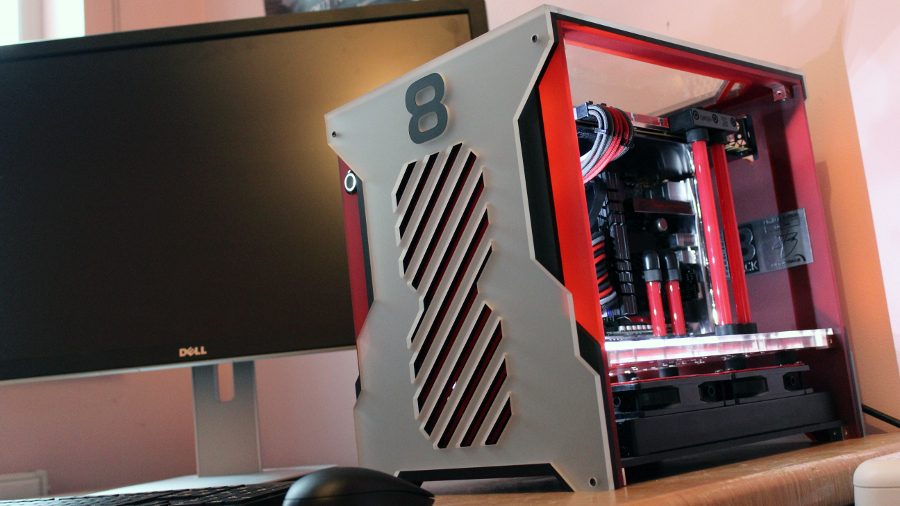
The extra acrylic layer means Overclockers can hide the EK CoolStream PE-series radiator beneath – and the rest of the cooling gear, along with the PSU, sits beneath a slab of black acrylic that functions as the motherboard tray. The entire machine sits on small feet that raise the case up, allowing air to reach the cooling hardware.
The Asus motherboard sits vertically behind the cooling pipes, and matches the colour theme thanks to red-and-black heatsinks. The graphics card and motherboard power cables are individually braided with red, black and grey fibres, and the black case fans are covered with a red 8Pack logo.
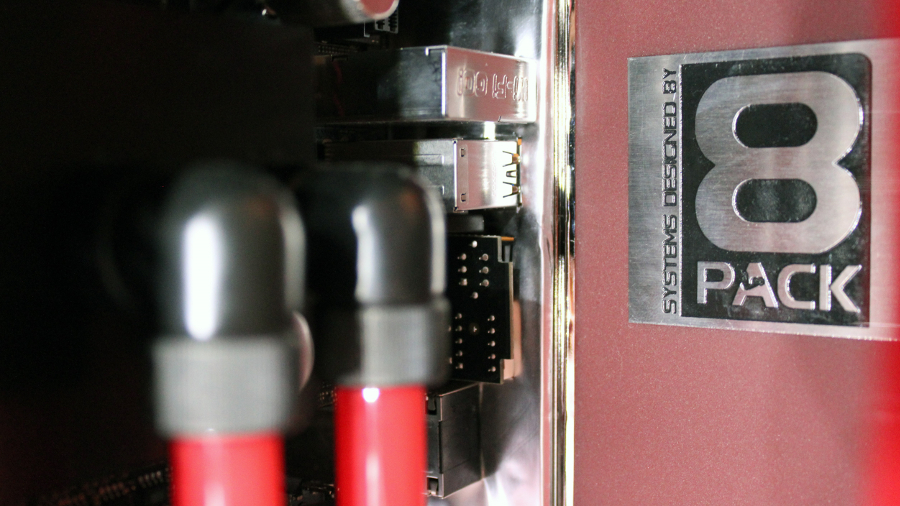
The entire interior is illuminated by a white strip-light, and the back has a smart plate of authenticity that’s decorated with 8Pack’s logo.
There’s no question about the design nous of this system. It’s one of the smallest gaming PCs I’ve ever seen, but it’s also one of the best-looking, with fantastic, attentive design and consistent colours. It’s the kind of rig that’ll draw admiring glances when it’s unveiled at a LAN party.
The design carries through to the outside, too: the Asteroid comes with its own 8Pack-branded flight case for transport to LAN events.
Specifications
The Asteroid looks incredible, and 8Pack has paired the looks with top-tier components.
Graphical grunt comes from Nvidia’s GeForce GTX 980 Ti. It’s one of the firm’s best cards, with 8 billion transistors, 2,816 stream processors and 6GB of GDDR5 memory alongside the latest Maxwell architecture.
There’s a Core i7-6700K processor with its four Hyper-Threaded cores and unlocked multiplier, and 8GB of 3,866MHz DDR4 memory.
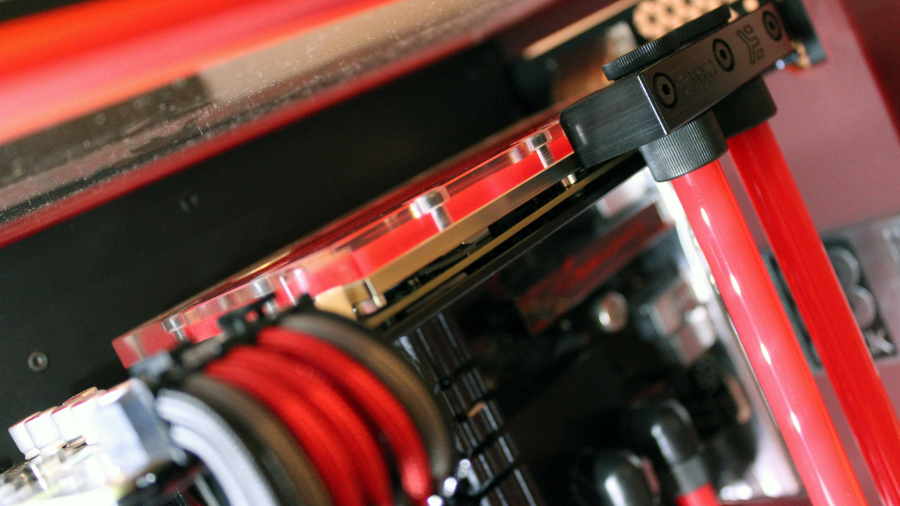
Spec Sheet
Here is the configuration of the Overclockers 8Pack Asteroid provided to techradar for review:
- CPU: 4.7GHz Intel Core i7-6700K processor (Quad-core, 8MB cache)
- Graphics: Nvidia GeForce GTX 980 Ti (6GB GDDR5 RAM)
- RAM: 8GB DDR4 (3,866MHz)
- Storage: 500GB Samsung 850 EVO SSD; 1TB Samsung 850 EVO SSD
- Connectivity: Gigabit Ethernet; Dual-band 802.11ac WiFi
- Operating system: Windows 10 64-bit
- Power supply: SuperFlower 1000W
- Ports: Front: Rear 4 x USB 3, 1 x USB 3.1 Type-A, 1 x USB 3.1 Type-C, Optical S/PDIF, Gigabit Ethernet, 3 x audio
- Size: 10.5in x 14in x 11.6in (W x D x H; 267 x 357 x 295mm)
- Warranty: 3yr (2yr C&R, 1yr labour)
Those core parts are impressive enough on their own, but that’s not why people buy 8Pack systems – they choose these monster machines to benefit from the world-class tweaking abilities of the man himself. That means no two Asteroid machines will run at the same speed, because 8Pack tests and bins chips to find the fastest silicon before overclocking each part to its best possible levels.
The GTX 980 Ti’s stock speed of 1,000MHz has been upped to 1,227MHz with a boost peak of 1,303MHz, and the memory’s original 1,753MHz pace now sits at a mighty 1,878MHz. The processor, meanwhile, was originally clocked to 4GHz, but now rattles along at 4.7GHz.
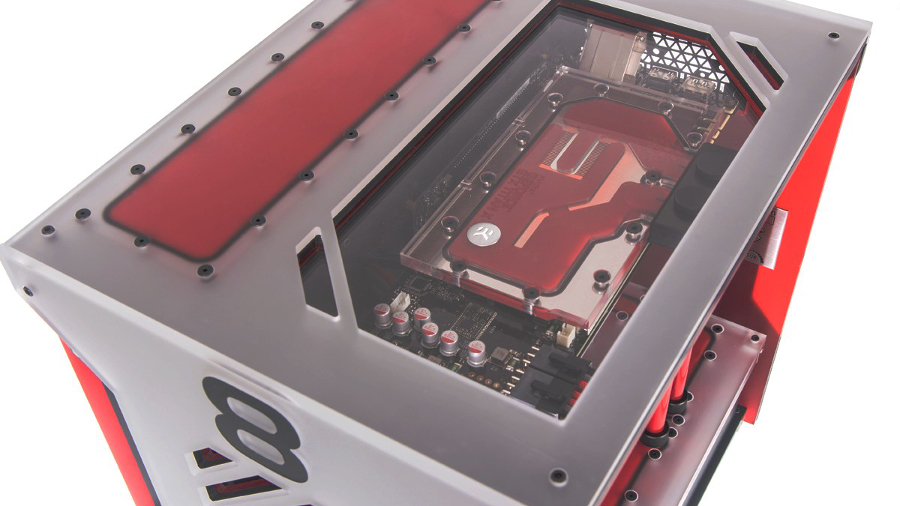
There’s no sign of a hard disk here: Windows 10 is installed on a 500GB Samsung 850 EVO drive, and there’s a 1TB 850 EVO for games. I would have preferred to see an M.2 PCI-based boot drive, but Overclockers say there’s simply no room for one in this rig.
The final big part, the motherboard, the Maximus VIII Impact, is a barnstormer. Asus has crammed dozens of game-friendly features into its mini-ITX blueprint: It’s got Gigabit Ethernet that prioritises game traffic and a discrete SupremeFX sound card with 10 DAC channels and multi-stream audio, and connectivity extends to dual-band 802.11ac wireless.
It’s got so many capacitors that they sit on their own daughterboard, and the backplate has power, reset and BIOS-clearing buttons that are usually only found on high-end ATX boards.
The backplate doesn’t stop there, either; it’s got four USB 3.0 ports, USB 3.1 Type-A and Type-C connectors, three audio jacks and an optical S/PDIF output.
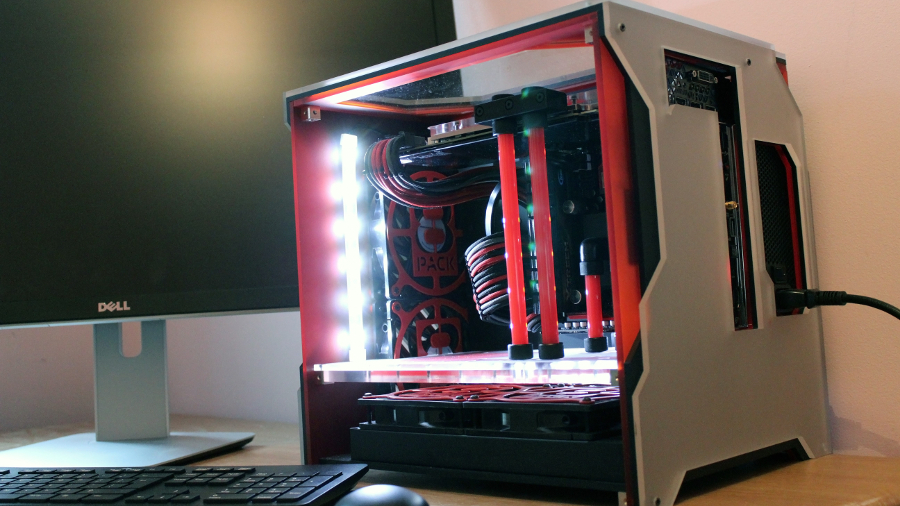
It’s a muscular specification, but Overclockers can still kit the Asteroid out with more power. The firm offers the machine with an Nvidia GeForce GTX Titan X, 16GB or 32GB of memory and more capacious storage, but that’ll cost around $700 (about £500, AU$934) more.
There’s little wrong with this machine’s specification – the only complaint I could make is the lack of upgrade room, but that’s common across all mini-ITX machines, and people aren’t buying a system like this to make their own upgrades.
Performance
It’s no surprise that the Asteroid blitzed every benchmark. Its first graphics test came in 3D Mark’s Fire Strike run, which is usually that app’s toughest trial – but the Asteroid delivered a final score of 17,031 points.
That’s just a little better than other recent gaming rigs. Take the affordable Asus ROG G20BM, which uses an AMD Radeon R9 390 card – in the same test it scored just 4,576 points.
Benchmarks
Here’s how the Overclockers 8Pack Asteroid performed in our suite of benchmark tests:
- 3DMark: Cloud Gate: 36,271; Sky Diver: 38,781; Fire Strike: 17,031
- Cinebench R15: CPU: 1,034cb; Graphics: 185.1fps
- PCMark 8 (Home Test): 4,840
- GeekBench: 5,173 (single-core); 20,194 (multi-core)
- Metro: Last Light: 91fps (1080p, Ultra); 58fps(1440p, Ultra); 31fps (4K, Ultra)
- Middle Earth: Shadow of Mordor: 142fps (1080p, Ultra); 103fps (1440p, Ultra); 58fps (4K, Ultra)
- Bioshock Infinite: 180fps (1080p, Ultra); 125fps (1440p, Ultra); 65fps (4K, Ultra)
- GTA V: 147fps (1080p, Ultra); 118fps (1440p, Ultra); 57fps (4K, Ultra)
- Steam VR Bench: VR Ready. Zero frames below 90fps
That’s a stonking start that carried on to real-world games tests. The Asteroid’s poorest performance at 1080p came in Metro: Last Light, where it still delivered a 98fps average, and it wasn’t much slower at 1440p. At that increased resolution the 8Pack’s worst performance was still in Metro, but it still managed a stellar 58fps average – and its best result, in Bioshock, saw it zip through at 125fps.
It’s no surprise, then, that the Asteroid won’t struggle with 4K gaming. It ran Metro at 31fps and Middle Earth: Shadow of Mordor at 58fps, and was only one frame slower in GTA V at 3,840 x 2,160. As ever, Bioshock proved the easiest games test – and the Asteroid romped through at 65fps.
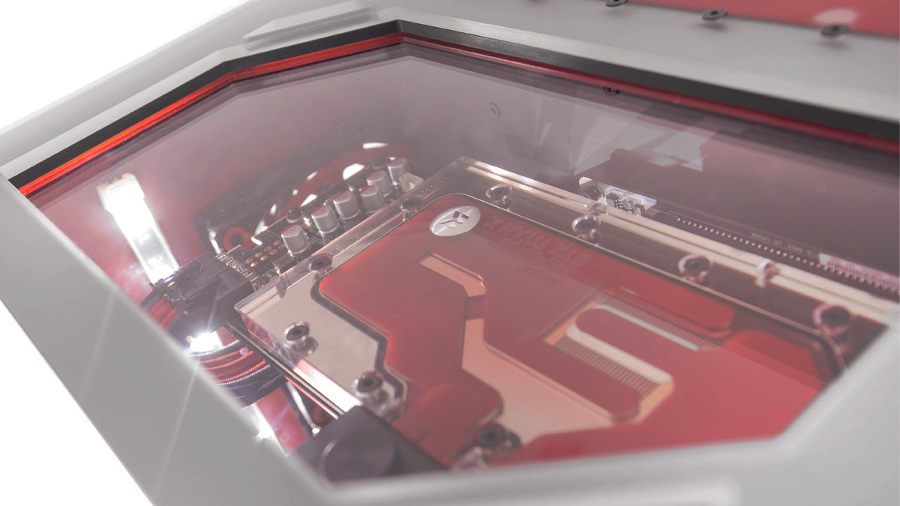
I’ve no qualms about this machine’s gaming ability at 4K, and the sheer power on offer also means it’ll cope with other high-end gaming tasks. It won’t struggle with widescreen monitors, as their typical 3,440 x 1,440 resolution requires just over half the pixels of a 4K panel. And it’s got the grunt for 4K, too – Valve’s SteamVR benchmark saw the Asteroid rated as VR Ready, with no frames below 90fps.
And don’t worry about games not looking their best, either: every one of our tests was conducted with our titles running at their Ultra graphics levels.
It’s a clean bill of health for gaming, and the Asteroid impressed in CPU benchmarks too. In Geekbench’s single- and multi-core tests the Asteroid scored 5,173 and 20,194 points, which are the fastest I’ve ever seen – they mean that no applications will prove too troublesome for this CPU.
The Asteroid looks good when lined up against rivals. In Cinebench’s CPU test the Overclockers rig scored 1,034 points, which was almost 150 points ahead of the XMG Prime Overclocked Nvidia Edition – a $2,833 (about £2,000, AU$3,736) rig with an older Core i7 chip.
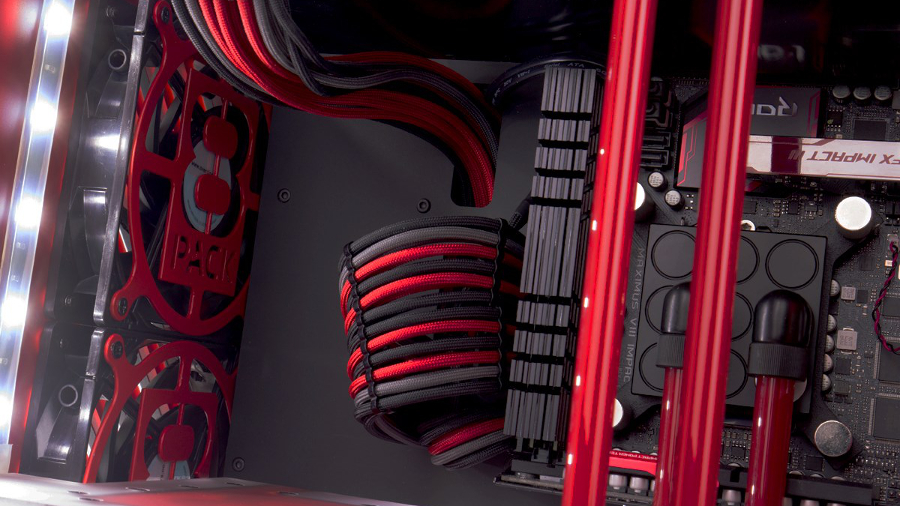
The incredible GPU and CPU are bolstered by decent storage. Samsung’s 850 EVO returned sequential read and write scores of 493MB/s and 480MB/s – reasonable speeds that easily beat any normal hard disk. The drive is fast, but it can’t compete with M.2 SSDs that use PCI bandwidth rather than SATA.
So far, so good – and I didn’t encounter any heat or noise problems. Despite the huge overclocks and tiny build, the Asteroid’s water-cooling kept the CPU and GPU chilled. The processor peaked at a reasonable 73°C, and the graphics card topped out at 55°C.
They’re both excellent results, and machines will likely run cooler – I only hit those figures by stressing the silicon at 100% load for a prolonged period. The system was near-silent when idling, and not much louder during those stress-tests – its peak noise output was a subtle, low rumble. At a busy LAN event you just won’t notice it, and it won’t be audible at home during gameplay either.
Verdict
The Overclockers 8Pack Asteroid is a monster of a PC – ironic, considering its tiny dimensions.
The design is stunning, from the acrylic case to the custom water-cooling and the consistent theme, and the components don’t let the side down. Their custom overclocks and ample specifications scythe through any game in any situation, and it does all of that while remaining impressively quiet.
We liked
The Asteroid has world-class design, but this machine isn’t just about looking good. The water-cooling system does an excellent job at chilling the overclocked silicon, and the Asteroid has broad connectivity. The motherboard has loads of features, and storage is good too.
Its benchmark results impress beyond games, too. The overclocked processor won’t balk at any task, the storage is quick, and there’s plenty of memory.
Overclockers has also thought about details beyond the PC itself. That flight case is sturdy enough to protect this PC during transit, and the moulded foam inside has recesses for accessories.
We disliked
There’s very little to dislike about the Asteroid. The price will be the main sticking point, but anyone considering this system knows what they’re getting into – for them, it won’t be a surprise, and its incredible design and performance justify the cost.
Elsewhere, there are only tiny quibbles. The mini-ITX form factor doesn’t allow much upgrade room, and the lack of space means there’s no room for M.2 storage. And, finally, I would have preferred some wheels on the flight case. The Asteroid isn’t light.
Final verdict
The Asteroid is one of the best PCs I’ve ever seen. It’s a small and impeccably-designed rig with enough power to cope with any gaming scenario, from 4K and demanding graphics options to widescreen and VR. And that’s not the end of its talents, either – it’s got huge CPU power, good storage and fast memory.
The stunning design and huge power don’t come cheap, but anyone looking at a system like this will be aware that the water-cooling, overclocking and custom case-building will always cost – and they’ll be able to justify that cost because of the skill required to build this machine alongside the admiring glances it’ll draw.
It’s an expensive, niche product, but it’s also one of the best gaming PCs on the planet.
Source: techradar.com





































